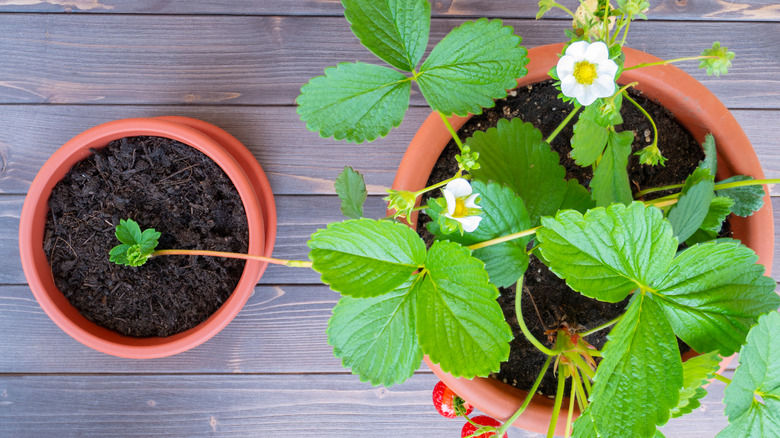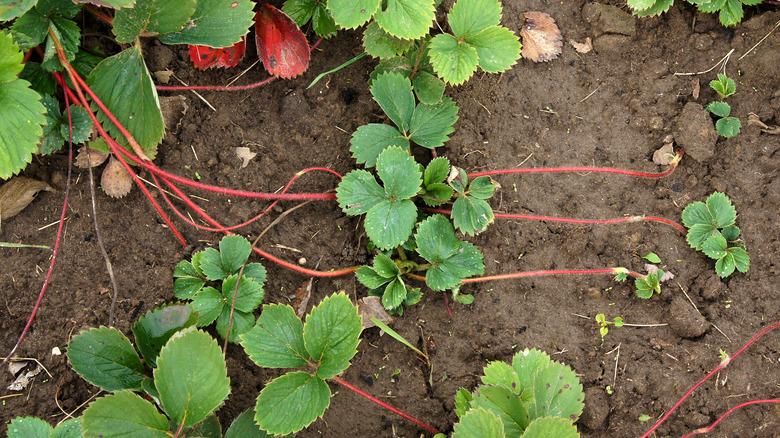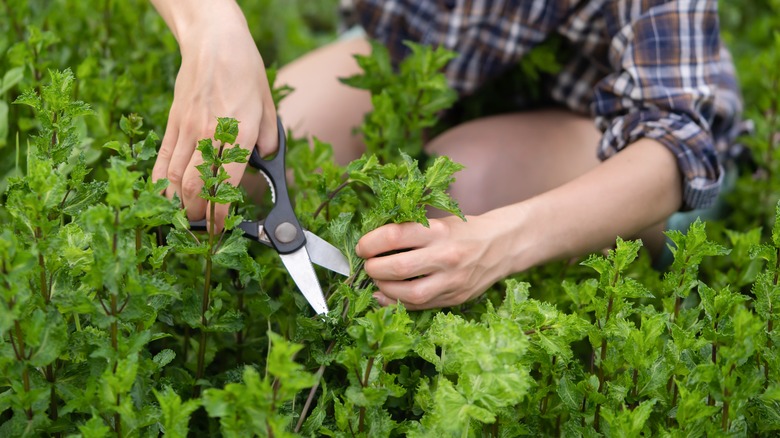How To Use Strawberry Runners To Grow More Strawberries
Strawberry runners are horizontal stems, also known as stolons, that grow from a parent strawberry plant. They are thin, elongated shoots that develop roots and leaves at regular intervals along their length. These runners are a natural means of propagation for strawberry plants. They enable the plant to spread and produce new, genetically identical offspring. As the runner extends, it implants itself in the soil, forming new roots and eventually independent plants. You can utilize strawberry runners to propagate and expand your strawberry patches or share with friends, as these young plants can be separated from the parent and transplanted to new locations.
When propagating strawberries from runners, there are a few important tips to keep in mind. First, choose healthy parent plants with robust runners. They should have well-developed roots and a good number of leaves. When transplanting, make sure the soil is well-prepared by removing weeds and providing adequate drainage. You'll want to choose an open area where the new plant won't have to compete for sunlight or nutrients. Keep it adequately watered to promote strong root establishment. Finally, provide protection from harsh weather conditions and pests and regularly monitor and remove any runners or plants showing signs of disease or weakness.
When and how to utilize runners
Allow strawberries to develop runners during their active growing season, usually in the late spring or early summer, depending on your zone. It's best to encourage the parent strawberry plants to establish themselves first before fostering the development of runners. This ensures that the parent plants have enough energy and resources to support the growth of the runners. Once the parent plants are established, allow runners to develop and spread. Monitor them and select the healthiest ones for propagation. If runners are left to grow unchecked, they can crowd the parent plant and hinder its overall productivity, leeching important energy and resources. By selectively allowing runners to develop at the right time, you can successfully expand your strawberry patch.
When it's time to propagate strawberries from runners, select the healthiest-looking candidates to promote future healthy plants. Trim away any weak or damaged ones in order to preserve nutrients and resources in the soil. Guide the runners into an uncrowded garden space or a nearby pot. Using metal wire or even old clothes pins, gently peg down the runner into the soil, carefully burying the node to encourage new roots to form. Once the new plant has established roots and is firmly developed in the soil, sever the connection to the parent plant and transplant it to its permanent location. Provide regular watering and monitor for pests or diseases. With proper care, the new strawberry plants will grow and produce a bountiful harvest.
Grow these other plants from runners
Strawberries aren't the only plant in your garden that you can grow from runners. Peppermint is another plant that is easily propagated. Like strawberries, locate healthy runners with established roots. Place them into well-draining soil, covering the nodes. Water the plant thoroughly, keeping the soil consistently moist. Provide adequate sunlight or partial shade. After a few weeks, roots will form, and the new plant can be separated from the parent. Peppermint can be invasive, so it is wise to keep these plants in pots, or they'll take over your garden.
Crocosmia flowers, also known as Montbretia, will also propagate from runners. This is a beautiful orange flowering plant with funnel-shaped blooms that, like mint, can become invasive if not maintained. Since this plant is susceptible to breakages, it reproduces by producing horizontal stolons. The runners will create corms that will grow into new plants and can be harvested, transplanted, or even shared with friends.
Another garden staple that can be grown from runners is the iris. Typically flowering in purple, orange, or yellow, the iris belongs to a genus of over 300 species. These flowers are excellent late-spring bloomers that attract beneficial pollinators like bees and hummingbirds to your garden. It's best to propagate irises from runners after they bloom in late summer to avoid sapping the parent plant of needed resources. Whenever growing new plants from runners, always select the healthiest-looking option to encourage strong new plants.


